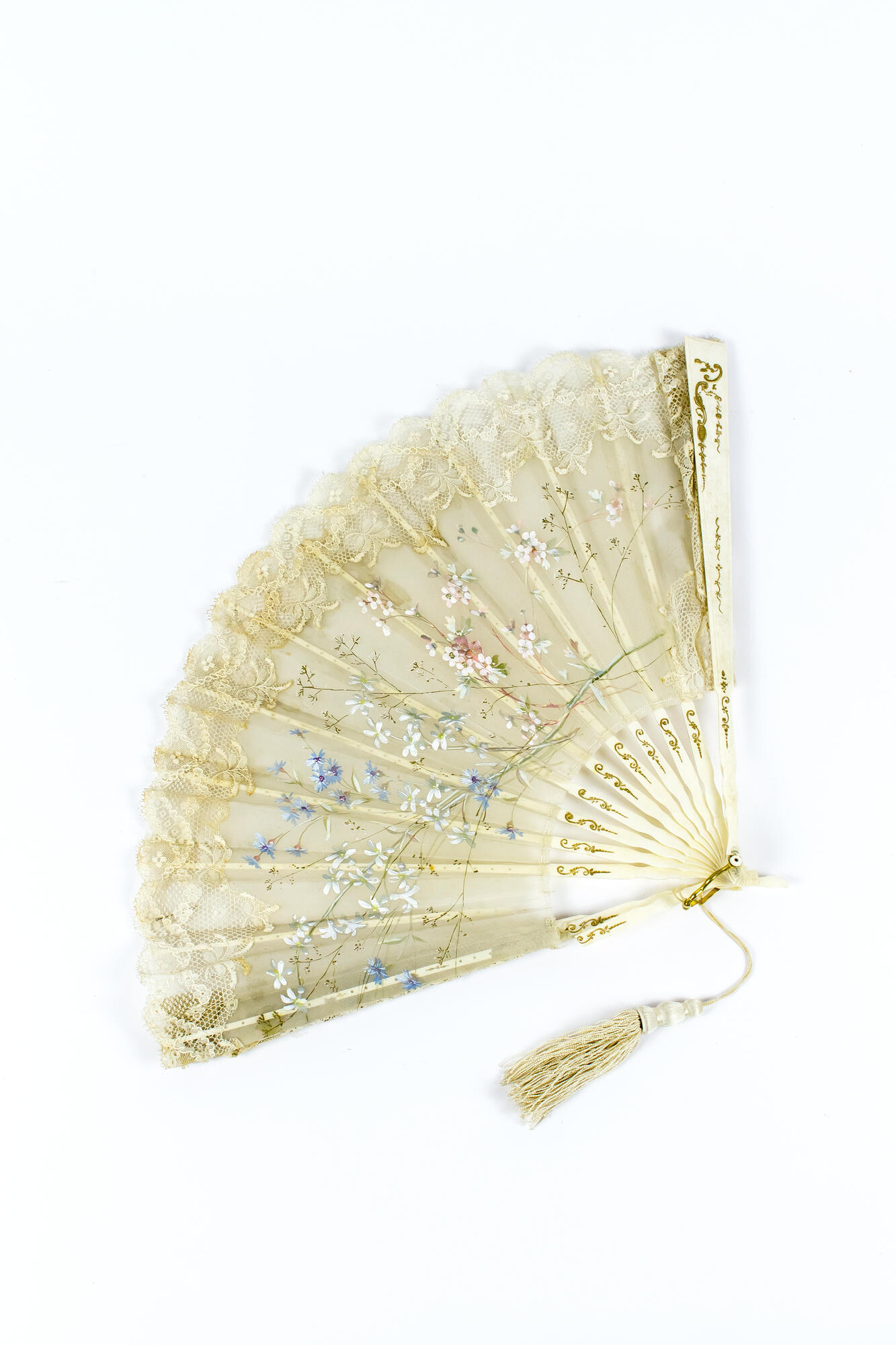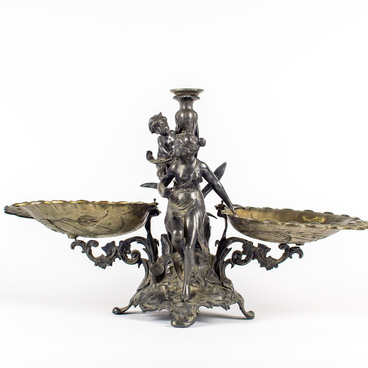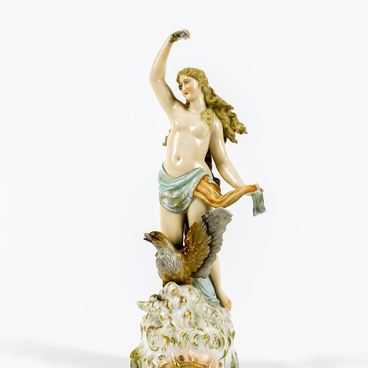The 19th-century fan on display is made of nylon, decorated with floral patterns and stretched over ivory sticks.
The first fans — screen fans — appeared in ancient times, about 9 thousand years ago. They did not fold and looked like a sheet or disk attached to a handle.
The European fans are first mentioned in documents of the 14th century, and in Russia, this accessory appeared even later — around the 16th century. Initially, small fans were miniature screen fans attached to a wooden or bone handle. Sometimes they were decorated with gold, silver, and precious stones.
Russian fans were made in Moscow, in the workshop of the Armoury Chamber. However, these accessories were mainly brought from the East. For example, the screen fans of Tsar Mikhail Fyodorovich and Tsarina Evdokia Lukyanovna were “Turski”, i.e. Turkish, work.
Folding fans appeared in the 17th century, initially, only members of the royal family and their entourage used them.
The fan became an especially popular accessory during the reign of Catherine II. During this period, it became almost an obligatory attribute of most women clothing.
In the 17th and 18th centuries, fans became a luxury item. They began to be made from silk, leather, parchment, and thick paper and some models had small attached mirrors.
At the court of King Louis XIV of France, ladies could unfold the hand fan only in the presence of the queen. Only aristocrats were allowed to carry this accessory.
Before the first social outing, the girl had to learn the art of handling a fan. The ladies used a whole system of signals with the help of which it was possible to show the gentleman their sympathy, or, conversely, ruin his hopes for an affair. So, if a lady touched her lips and heart with an open fan, she signaled: “You are my ideal”. If she applied the fan with her right hand to her left cheek, then she made it clear that courtship was useless. Men also knew these secret symbols.
The language of the fan lost its meaning in the 19th century, but the accessory did not go out of fashion anyway. In the middle of the century, lace fans became popular; they began to be made to match the dresses and often from the same material as the ceremonial costume. The most expensive fans were made of lace: they testified to wealth and high social status.
The first fans — screen fans — appeared in ancient times, about 9 thousand years ago. They did not fold and looked like a sheet or disk attached to a handle.
The European fans are first mentioned in documents of the 14th century, and in Russia, this accessory appeared even later — around the 16th century. Initially, small fans were miniature screen fans attached to a wooden or bone handle. Sometimes they were decorated with gold, silver, and precious stones.
Russian fans were made in Moscow, in the workshop of the Armoury Chamber. However, these accessories were mainly brought from the East. For example, the screen fans of Tsar Mikhail Fyodorovich and Tsarina Evdokia Lukyanovna were “Turski”, i.e. Turkish, work.
Folding fans appeared in the 17th century, initially, only members of the royal family and their entourage used them.
The fan became an especially popular accessory during the reign of Catherine II. During this period, it became almost an obligatory attribute of most women clothing.
In the 17th and 18th centuries, fans became a luxury item. They began to be made from silk, leather, parchment, and thick paper and some models had small attached mirrors.
At the court of King Louis XIV of France, ladies could unfold the hand fan only in the presence of the queen. Only aristocrats were allowed to carry this accessory.
Before the first social outing, the girl had to learn the art of handling a fan. The ladies used a whole system of signals with the help of which it was possible to show the gentleman their sympathy, or, conversely, ruin his hopes for an affair. So, if a lady touched her lips and heart with an open fan, she signaled: “You are my ideal”. If she applied the fan with her right hand to her left cheek, then she made it clear that courtship was useless. Men also knew these secret symbols.
The language of the fan lost its meaning in the 19th century, but the accessory did not go out of fashion anyway. In the middle of the century, lace fans became popular; they began to be made to match the dresses and often from the same material as the ceremonial costume. The most expensive fans were made of lace: they testified to wealth and high social status.



